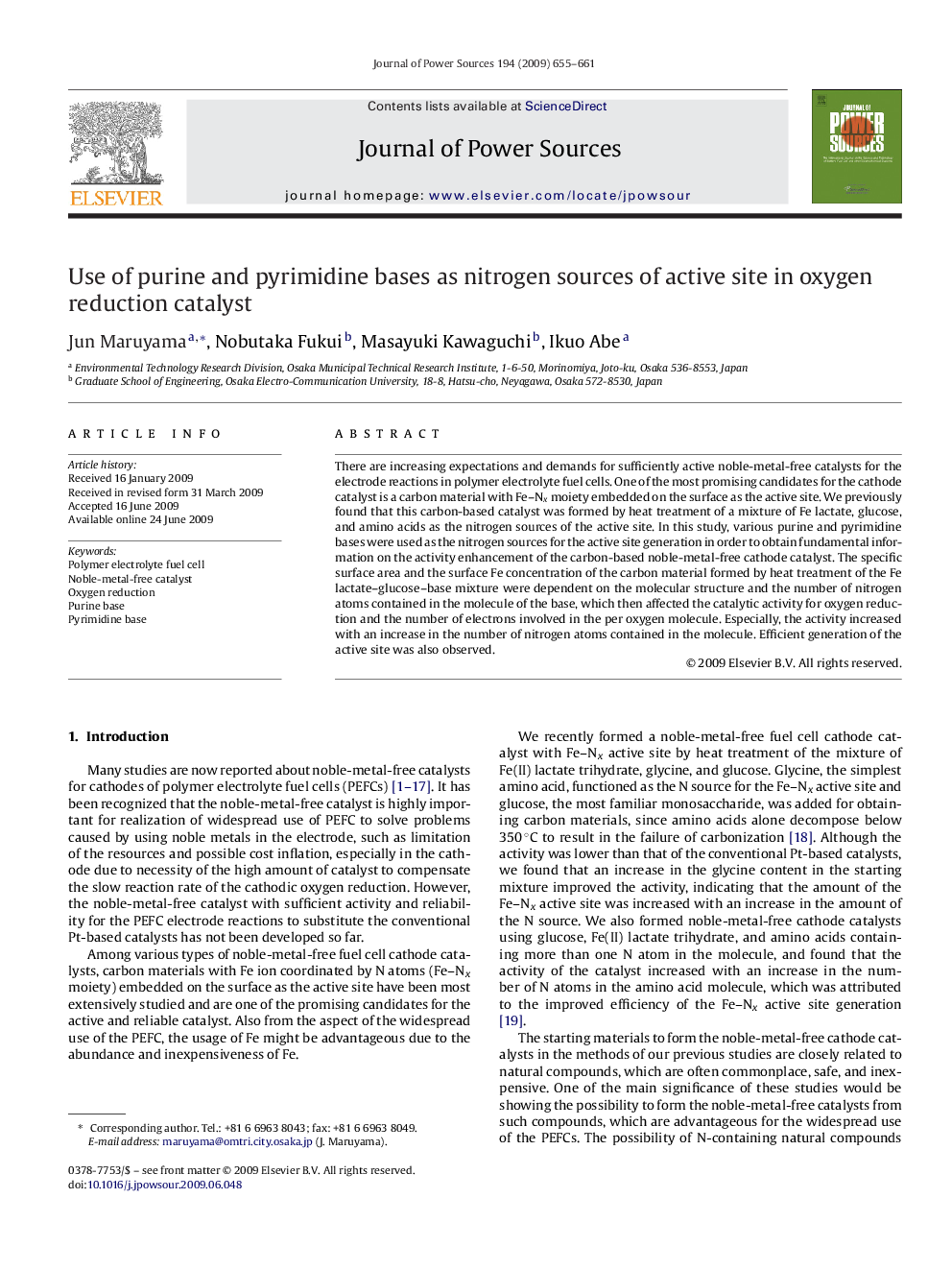| Article ID | Journal | Published Year | Pages | File Type |
|---|---|---|---|---|
| 1294012 | Journal of Power Sources | 2009 | 7 Pages |
There are increasing expectations and demands for sufficiently active noble-metal-free catalysts for the electrode reactions in polymer electrolyte fuel cells. One of the most promising candidates for the cathode catalyst is a carbon material with Fe–Nx moiety embedded on the surface as the active site. We previously found that this carbon-based catalyst was formed by heat treatment of a mixture of Fe lactate, glucose, and amino acids as the nitrogen sources of the active site. In this study, various purine and pyrimidine bases were used as the nitrogen sources for the active site generation in order to obtain fundamental information on the activity enhancement of the carbon-based noble-metal-free cathode catalyst. The specific surface area and the surface Fe concentration of the carbon material formed by heat treatment of the Fe lactate–glucose–base mixture were dependent on the molecular structure and the number of nitrogen atoms contained in the molecule of the base, which then affected the catalytic activity for oxygen reduction and the number of electrons involved in the per oxygen molecule. Especially, the activity increased with an increase in the number of nitrogen atoms contained in the molecule. Efficient generation of the active site was also observed.
